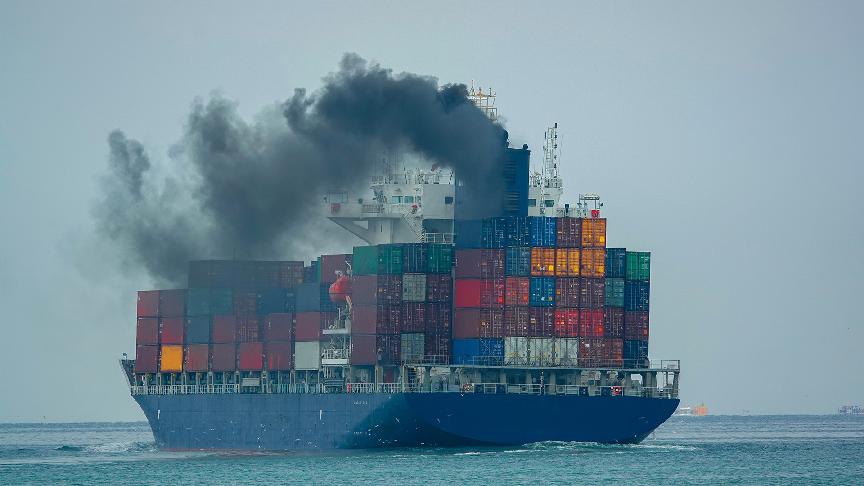13 February 2024 (Lloyd's List) - NORWAY, Brazil and the UAE have co-sponsored a modified proposal by China at the International Maritime Organization for a regulatory tool to cut shipping's greenhouse gas emissions and the carbon intensity of ship fuels.
China's renewed proposal, called the International Maritime Sustainable Fuels & Fund (IMSF&F), would set a global fuel standard and fund mechanism to tax GHG emissions and raise money for the green transition.
The IMO is mulling various proposals by countries for a technical measure to lessen the carbon content of fuels, and a corresponding economic measure such as a carbon tax or levy to transition shipping from dirty fuels to cleaner ones.
In co-sponsoring the Chinese plan, Norway appears to have abandoned its own proposal for an emissions trading system ahead of MEPC81; the plan had won little support as EU members led by France backed a rival plan for a GHG levy.
China's recent proposal accounts for full lifecycle emissions, also called well-to-wake, in line with the IMO's revised greenhouse strategy.
Its co-sponsors proposed a fuel standard that will initially allow use of fuels with high well-to-wake emissions to ensure uptake of alternative fuel technologies in newbuildings.
The proposal would set an annual fuel intensity target from 2027. Ships that achieve its target will not have to take any action, while over-emitting vessels will have to comply by either paying for its emissions to buy units from the fund or pooling with over-compliant ships. Another way to comply is to buy surplus units from over-compliant vessels.
"The Sustainable Shipping Fund will be established by the IMO and overseen by a governing board that has a geographically balanced composition," co-sponsors said in the submission.
Revenues will be collected in the SSF to reward over-compliant vessels. The fund will support decarbonisation efforts such as applied research and development programmes and technology transfer of alternative fuels and innovative technologies, in-sector capacity building and negative impact mitigation in developing countries.
Achieving fuel standard targets will be the preferred method of compliance, as the price of compliance units will be set higher than that of complying with methods such as bunkering with alternative fuels, according to the submission.
Other IMO member countries and organisations submitted plans to help the IMO in its quest for mid-term measures to help the shipping industry achieve new climate targets.
The World Shipping Council, a container carrier trade group, proposed a "Green Balance Mechanism" either as part of an integrated levy/GHG fuel standard approach or as a standalone economic measure.
The WSC's well-to-wake proposal also includes an annual fuel standard to collect funds from vessels that emit more than their target, while paying overachieving ships as part of the mechanism. The liner shipping body said its mechanism will set a more stringent emissions threshold to determine which vessels receive payments as part of its proposal.
A vessel that overachieves its fuel intensity target with low-emission fuels or other technologies, such as wind-assisted propulsion, will receive a payment of $295 per tonne of CO2 equivalent in 2030, while a vessel that misses its target will pay $74, based on an example that estimates conventional fuel prices at $600 per tonne and $2,000 for zero or near-zero emission fuels.
"The Green Balance Mechanism would immediately enable the use of net-zero and near-zero fuels early in the transition and create a strong demand signal for energy producers to make the necessary investments in green fuel production while also incentivising shipowners and operators to use fuels and technologies that deliver deep GHG reductions," the WSC said in its submission.
Canada made a new proposal for a flat rate levy starting at $90 per tonne of CO2 equivalent in 2027, then rising to $100, $115 and $130 in 2028, 2029 and 2030, respectively.
Meanwhile, a coalition of small island developing states led by the Marshall Islands and the Solomon Islands renewed their flat rate levy proposal with a higher price of $150 per tonne of CO2 equivalent, up from $100 previously.
IMO member states agreed to adopt mid-term technical and economic measures in 2025 to help the industry reach its new targets of cutting emissions by 20% by 2030 and 70% by 2040 to reach net-zero by or around 2050.
The technical measure will be a global fuel standard, while the economic measure is to be decided following an impact assessment. The interim impact assessment report will be published before MEPC81 on March 18-22.







